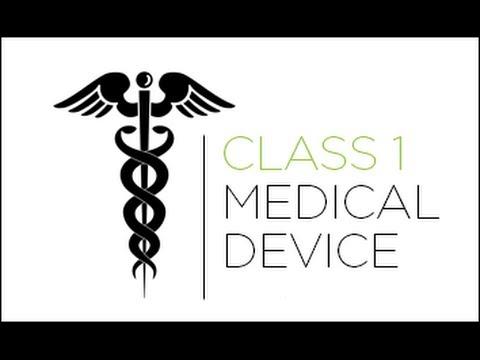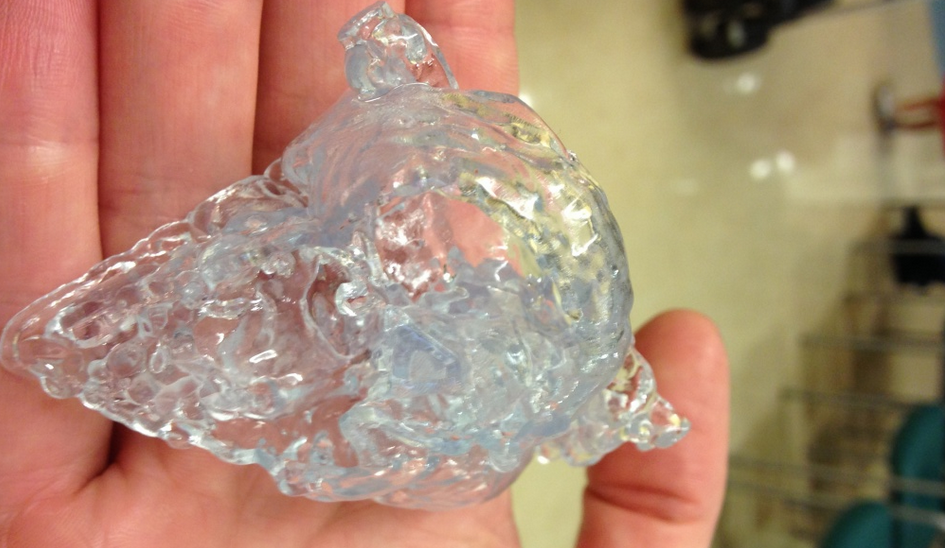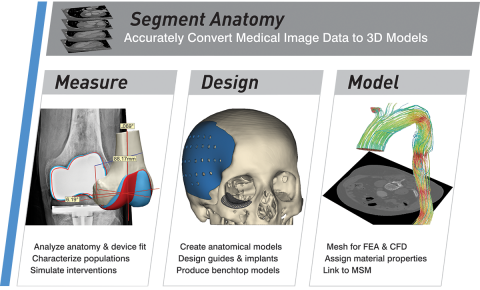 It has just been announced that Materialise has listed their 3D-printed cardiovascular HeartPrint® models as Class 1 medical devices in the U.S., and European markets. HeartPrint is Materialise’s service that provides 3D-printed anatomical replicas from medical image data.
It has just been announced that Materialise has listed their 3D-printed cardiovascular HeartPrint® models as Class 1 medical devices in the U.S., and European markets. HeartPrint is Materialise’s service that provides 3D-printed anatomical replicas from medical image data.
This definitely brings further attention and worldwide credibility to the 3D printing industry, but Materialise has been stealing heroic headlines left and right lately, always capturing special interest with stories regarding children who had barely begun to live and were struggling or living a lesser quality of life because of a defect or illness. Their lives were affected enormously by Materialise’s technology.
3D printing is certainly not just about science projects or arts and crafts. In a number of recent cases it has swung the pendulum on the side of doctors and patients, in some very complex life and death cases. Medical professionals and specialists have consulted with Materialise on very serious, detailed medical matters which we have reported on in past weeks and months.
Most recently Brooklyn surgeon, Dr. Emile Bacha, used a 3D printed model to repair the heart of a newborn baby whose heart was riddled with holes, very possibly saving the child’s life. The baby had a heart that was literally just the size of a walnut. Todd Pietila, Cardiovascular Business Development Manager at Materialise, had been working on the project since the baby was born. He made a 3D model of the baby’s heart with Mimics Innovation Software, and then 3D printed a a model for doctors to use, being able to view even the most minute details of the tiny heart. For more on the article, click here.
“After the success of this surgery, it’s hard to imagine entering an operating room for another complex case without the aid of a 3D printed model. It’s definitely going to be standard of care in the future and we’re happy to be leading the way,” said Dr. Emile Bacha, a congenital heart surgeon and Director of Congenital and Pediatric Cardiac Surgery at NewYork-Presbyterian/ Morgan Stanley Children’s Hospital.
We also covered the much publicized story of Bradley White, who was born with a tumor in his heart and had endured open-heart surgeries as a toddler. At the age of 16, the tumor was causing him to have an irregular heartbeat, and specialists on staff at Cincinnati Children’s Hospital called on Materialise for help.
Using their Mimics Innovation Software in this instance also, Todd Pietila created a model of Bradley’s heart and tumor, delivering a 3D printed copy to cardiologist Dr. Timothy Knilans, and cardiac surgeon Dr. David Morales, who decided, based on looking at the model, not to operate and to perform an alternative procedure. For more on that article, click here.
The 3D-printed models are custom-designed from medical image data specific to patients, such as scans and X-rays. The models provide cardiologists and surgeons with supplemental information to determine the best treatment for each unique patient.
It’s already clear that Materialise is on the forefront regarding extremely important and complex innovations with 3D printing technology, but with the Class 1 rating, they will be afforded the opportunity to add HeartPrint models to their offering for pre-operative planning. The FDA classifies medical devices based on risk, with three different levels. Class I devices are considered low risk by the FDA and are not subject to as much regulatory control.
“Where I think clinically 3D printing will take us, is to the next generation of imaging. As we’ve seen in the history of medicine, the better and better our imaging, the more precise we are to pre-operatively be able to say what operation we’re going to do,” said David Morales, MD, Chief of Cardiovascular Surgery for the Heart Institute at Cincinnati Children’s Hospital Medical Center.
“We’re proud that the Mimics Innovation Suite is one of the few engineering packages with the appropriate validation to be considered a medical device. This makes it easier for Materialise and our customers to bring patient-specific, 3D-printed treatments to the market. It’s important for us to stay ahead of the regulatory requirements,” Koen Engelborghs, Director of Biomedical Engineering at Materialise, states. “We saw the advantages for patients when HeartPrint models were used in a clinical environment and are looking forward to continuing our collaborations with hospitals to address their 3D printing needs.”
 With anything new in medicine—and especially something as completely innovative and revolutionary as 3D printing—there are concerns, and skeptics. Materialise all on its own, in addressing the need for models that can assist with diagnosing, planning and practicing complex cardiovascular procedures, is bringing great awareness to the value of 3D printing technology—and there are probably many individuals and entities today wondering what we ever did without it.
With anything new in medicine—and especially something as completely innovative and revolutionary as 3D printing—there are concerns, and skeptics. Materialise all on its own, in addressing the need for models that can assist with diagnosing, planning and practicing complex cardiovascular procedures, is bringing great awareness to the value of 3D printing technology—and there are probably many individuals and entities today wondering what we ever did without it.
Have you seen any 3D models at your doctor’s office, or do you know anyone who has benefitted from this technology in a medical setting? Tell us about it in the HeartPrint forum thread at 3DPB.com.
Subscribe to Our Email Newsletter
Stay up-to-date on all the latest news from the 3D printing industry and receive information and offers from third party vendors.
You May Also Like
Human Remains Could Be Identified with the Help of Forensic 3D Printing
I’m still in awe at what additive technologies can accomplish, from creating alternative meats, automotive parts, shoe insoles, and surgical models, to giving faces to the lost. That is to...
3D Printing News Briefs, May 17, 2023: Stress-Resistant Alloy, 3D Printed Trophies, & More
In today’s 3D Printing News Briefs, we’re starting off with a little research, as materials scientists developed a 3D printing process that produces an extremely stress-resistant alloy. Moving on to...
On the Ground with COBOD Construction 3D Printing at Ohio State
This winter, The Ohio State University’s Center for Design and Manufacturing Excellence (CDME), which is one of the country’s largest additive research groups, received a COBOD BOD2 3D construction printer...
3D Printing Webinar & Event Roundup: April 2, 2023
You can breathe easy this week, because it will be much less hectic than last week, at least in terms of 3D printing webinars and events to attend! There will...



































